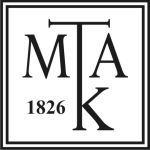A „törvények uralma” a zsidó vallásjogban
DOI:
https://doi.org/10.15170/Dike.2022.06.01.15Kulcsszavak:
codification, Halakhah, Jewish law, rabbinic authority, rule of law, TorahAbsztrakt
In this paper, the issue of the “rule of law” is discussed within Jewish religious law (halakhah). My question is the following: how long can we talk about the rule of the Law of the Eternal – the Mosaic Law – and from when can we talk about the rule of human interpretations of the law, human conclusions and provisions drawn from it? The question is also particularly interesting because the mere reading of the Mosaic Law itself requires an interpretative approach due to the specific characteristics of the Hebrew language and the Hebrew text of the scrolls of the Torah. In order to discuss the trial issue, in my study I will examine the main features of the Written Torah, the necessity of its explaining, the creation of the Oral Torah, its categories, the most important authors, and their most basic works (Mishanh, Talmud etc.). I discuss the personalities of the legislators, – e.g., priest, judge, scribe, rabbi etc. – the nature of their authority, the most important legislative “organisations” (The Men of the Great Assembly, the Great Sanhedrin, smaller courts). The closer in time a Scripture-interpreter, decision-making generation is to the revelation at Mount Sinai, they are considered the more authoritative and unquestionable, and after the destruction of the Temple, decrees of smaller and smaller scope can be issued. At the same time, it seems that to keep the Jewish community united and to survive, the rabbis began to strictly regulate the life of the Jewish people with their decrees in ancient times already. However, in the course of history it has occurred – and is still a problem in some denominations nowadays – that human interpretations, opinions and decisions have overwritten even the original source, the Written Torah. This attitude is objected by several people, so in the course of history, trends that do not accept the Oral Torah were also created (e.g., Karaites), and mainly in the modern age, Judaism has fragmented into trends along the lines of questioning the authority of the Oral Torah. Actually, the different denominations give different answers to the question of how long the rule of the Eternal’s Law lasts, and from when we can talk about the rule of human opinions and decisions, so examining the attitude and halakhah of the different trends, the debates between these denominations can help us think more deeply about the issue.
Downloads
Megjelent
Hogyan kell idézni
Folyóirat szám
Rovat
License
Open Access politika: A folyóirat nyílt és korlátlan hozzáférést biztosít a tartalmához. Bárki jogosult a közzétett tartalmak letöltésére, felhasználására, nyomtatására, terjesztésére és/vagy másolására a nemzetközileg elfogadott tudományetikai normáknak megfelelően.
A folyóirat (Kiadó) szabadon elérhetővé és letölthetővé teszi a cikkeket saját hivatalos, kiadói honlapján, időbeli korlátozás nélkül. A cikk első közzétételének joga kizárólagosan a Kiadót illeti. A Szerző elfogadja, hogy a Kiadó a cikket oly módon teszi közzé, hogy a cikk felhasználási jogaira bármely harmadik fél számára az első közzétételt követően a Creative Commons Attribution-NonCommercial-SharAlike 4.0 (CC-BY-NC-SA 4.0) licenc feltételek az irányadók. A Kiadó e licensz keretében átalakíthatja a cikket tetszőleges elektronikus formátumba, a cikket számítógéppel vagy elektronikus adathordozóra másolhatja. A Kiadó a cikk közlési és felhasználási jogát megoszthatja bármely harmadik féllel, illetőleg e jogokat bármely harmadik féllel közösen gyakorolhatja. A Kiadó a Szerző nevében felléphet a cikkel kapcsolatos jogsértések, jogtalan felhasználás és szellemi tulajdon sérelmét jelentő magatartások esetén. Gyakorolhatja mindazon jogokat, amelyeket a fent megjelölt „CC BY NC SA 4.0” licenc feltételek lehetővé tesznek harmadik felek számára.










